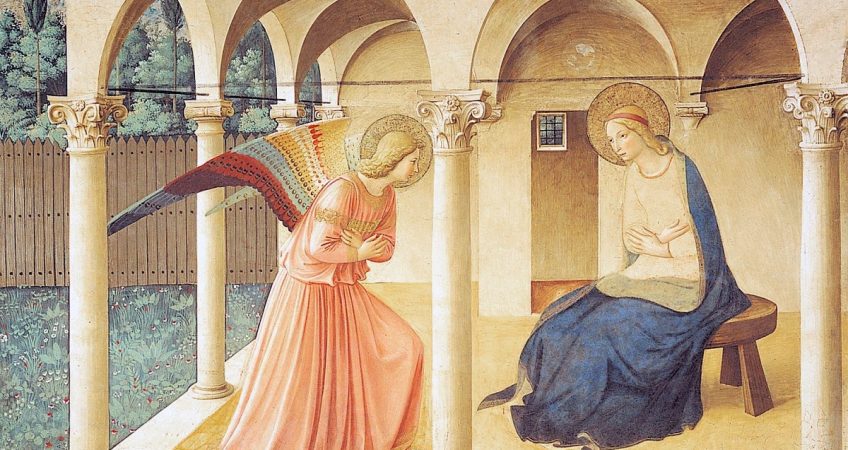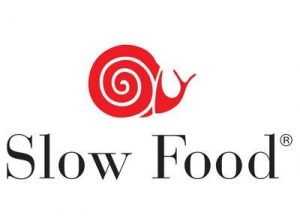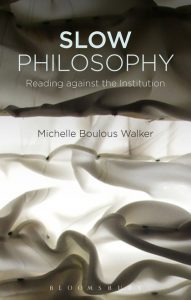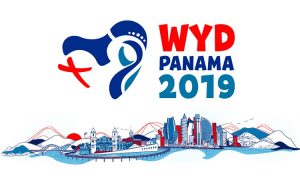Pre-WYD Catechesis – WYD Theme: “Let it Be Done Unto Me According To Thy Word”

PRE-WYD CATECHESIS – WYD THEME: “Let it Be Done Unto Me According To Thy Word”
St Mary’s Cathedral Chapter Hall
- Slow Food


The Slow Food movement began in the 1980s in response to the opening of a McDonald’s store near the Spanish Steps in Rome. In its 32 years so far, the Slow Food movement has grown into a global organisation and has inspired many parallel movements. Slow Food International claims over 100,000 members across 150 countries, with local groups across Australia.
The antithesis of the fast food movement, at its heart the slow food movement decries our modern obsession with speed and efficiency, the busy-busy-busy of life, which leads us to wolf down mass-produced cheeseburgers as we rush from one task to the next. The proponents of the slow food movement suggest the antidote of eating food that is grown locally and organically, processed as little and small-scale as possible, prepared with love and care, and consumed with attentive appreciation. Here in Australia they promote Ligurian bee honey from Kangaroo Island, native bunya nut from Queensland and bull-boar sausage from Victoria. But whatever the produce, the slow-foodies encourage us to take our time over our meals…
The last three decades have seen the philosophy behind the Slow Food movement applied to other areas of life such as Slow Ageing, Slow Architecture, Slow Cinema, Slow Counselling, Slow Fashion, Slow Gardening, Slow Marketing, Slow Medicine, Slow Media, Slow Parenting, Slow Scholarship, Slow Tech and Slow Living.
It was perhaps inevitable, then, that there would eventually be a ‘Slow Philosophy’ movement. Slow Phil suggests that philosophy is impoverished when it is rushed to meet production deadlines. UQ lecturer Michelle Boulous-Walker argues that good philosophy requires personal engagement, thorough reading, grappling with texts, deliberative dialogue, wrestling with ideas – all of which takes time.[1]

We can see a similar lines of thought in the Christian tradition, fort example in the practice of lectio divina, or ‘divine reading’, whereby people gradually and repeatedly read a piece of Scripture, savouring each word and idea, until ‘the Word of God is so read and meditated that it becomes a prayer’ (CCC 1107).
Meditation is often associated with the great Eastern religions and the word can evoke images of yogis sitting in the Lotus position, chanting ‘OM’, and seeking to empty their minds of all thoughts. But Christianity has its own long tradition of meditation as a practice that “engages thought, imagination, emotion, and desire” (CCC 2708). It is fed not just by a gradual reading of Holy Scripture but also by vocal prayer such as the Rosary, chants or the Sacred Liturgy that wash over us like waves of the sea, or by quiet private prayer and reflection upon Christian experience. Such an immersive experience that engages the whole person necessarily takes time. But such time wasting is necessary, according to the Catechism of the Catholic Church, “in order to deepen our conviction of faith, prompt the conversion of our heart, and strengthen our will to follow Christ” (CCC 2708). Perhaps it is unsurprising then that we have seen, in recent years, a ‘slow church’ or ‘slow theology’ movement, including such big names as the American Protestant theologian Stanley Hauerwas.[2]
If the Slow movement is right, catching a quickie 30-minute Sunday Mass might suit our schedule but cost us in terms of depth of experience. The sound-bite homily might be a relief and even a brief inspiration, but it won’t feed the soul for long. Racing through our prayers might not be the best way to connect with oneself or with God.
Against the go-go-go culture, with its constant focus on production, efficiency, busyness, Catholicism emerges as a positively ‘medieval’, indeed ‘ancient’. It’s on Pacific Time even when it’s not in the Islands. It just can’t be reduced to 140-characters, a meme or even a Ted talk. Not because you can’t say deep things short, but because you can’t truly hear them, see them, receive them short. Matters of the heart and mind take their own good time.
- Slow Angel
When the angel Gabriel appeared to Mary she was, according to sacred tradition, sitting composed, reading the Scriptures or deep in prayer. Big insights, you see, don’t normally stumble across us or us across them: it takes preparation, readying our ears to hear, our eyes to see, our minds to learn. I don’t know if Gabriel had big colourful wings as in sacred art. But Mary’s reaction was understandable enough: she rubbed her eyes, perhaps checked what it was she’d been drinking, had an anxious expression on her face. If an angel came to you on your way home tonight and said you had an important role to play in God’s plan of Salvation, you’d probably think you were a little high on adrenaline after the WYD meeting and take some Nurofen…
But, what if you knew it was a real visitation? After you’d gotten over the initial shock and scepticism, wouldn’t you jump at the chance? Let’s have a show of hands: who would sign up to God’s plan immediately? Well, if Our Lady were here tonight her hand would be well and truly down! Mary didn’t rush in with “Hey Gabby, whatever you want, its fine by me.” The words of our WYD theme – “Let it be done unto me according to thy word” – were not Mary’s response to the angel’s greeting. No, her reaction was to ask questions, to interrogate even challenge God’s messenger. “Who are you? What do you want? How can that be – with me a virgin and all?”
Was Mary a modern sceptic, a cynic, one of those hard-hearted people who you’ll never convince of anything spiritual? No, she is a woman of great faith but also of great reason. She’s intelligent. And as St John Paul II, the Father of World Youth Day, taught, such searching questioning is “the first aspect of true faithfulness”.[3] In asking how God will bring it about, Mary isn’t doubting its possibility or resisting faith, but deepening it. She rightly seeks to understand God’s plan for her and for the world – but she does so while expressing her willingness to follow that plan, however mysterious it remains for her.
Mary’s Fiat, her consent, her ‘Yes’, then, is not given lightly. And nor should it be. If Mary had simply said ‘absolutely, no problems, go for it Gabbs’ when the angel first spoke, she have been well-intentioned perhaps, but naïve also, even reckless. A ‘leap before you look’ mentality might give you the trill of the risk-taker but you can end up as road-kill. Being spontaneous in such things can be the enemy of constancy and consistency. But to really be part of God’s plan Mary’s ‘yes’ – and ours too – has to be constant, consistent, for keeps.
“Let it be done unto me according to your word”, Mary says, but only after taking her time and asking her questions. Even then, like the good proponent of ‘slow theology’ that she is, she doesn’t say ‘case closed’. She keeps dialoguing, keeps up her relationship with truth, keeps trying to understand. Three times the Gospel of Luke tells us she ‘pondered these things in her heart’ (Lk 1:29; 2:19; 2:51). The first is when Gabriel called her ‘full of grace’. We’ve already looked at the measured response she gives. But what are the other two?
The second is nine months later, at Christmas, when a comet blazed, angels sang the Gloria from Mass, and shepherds came to adore the new-born. They glimpsed that he was the new David, a shepherd boy like them but the Good Shepherd, the Best Shepherd, who would be King. Once again, Mary is agog. Once again, she wondered what it all meant. She didn’t feel much like a queen and the Messiah might expect a rather grander entrance to the world than a smelly animal stable with a royal court of equally smelly farm hands. But again, Mary didn’t rush to judgement: she wondered how all this would all fit into God’s plan, and she silently repeats in her heart, fiat, ‘let it be done according to your word’.
Twelve or so years on, and the adolescent Jesus has gone missing. After three days they find him at Theology on Tap or some ancient near eastern equivalent, discussing theology with the Archbishop and others in the cathedral. Mary is agog once more, she questions once more, she is always trying to understand. “Why have you done this?” she asks, “Your father and I have been looking everywhere for you!” To which Jesus replies “I must be in my Father’s business”. Does Mary then scold him? No, the Gospel tells us, she ‘treasures these things in her heart’. A third time she doesn’t understand; a third time she questions; a third time she ponders; and a third time she stands by her ‘Yes’.

- Slow Yes
So Mary’s ‘Yes’ to God was not a one-off affair, an excited if passing commitment made by an enthusiastic teenager. It was her whole posture in life, remaining constant no matter what came her way. As we’ve seen, it wasn’t a blind Yes, but it was a constant one. And though the Gospel doesn’t report it directly, there at least one more ‘yes’, a fourth time that Mary must say ‘let it be done according to your word’. At the foot of the Cross, the mother of the Messiah stood and watched her boy die the death of a slave, a traitor. She watched as his followers deserted him, the passers-by mocked him, the soldiers scourged and humiliated, crucified and ultimately speared him. No doubt she asked God in her heart as her boy asked out loud: “Why God? Have you abandoned us God?” But still she stood firm. Still she said Yes.
How many of us can say the same about ourselves? Sometimes we say Yes to god, sometimes No, but most of us, I suspect, answer maybe, much of the time. We’re a bit like the Fomos who are afraid to commit to going to a party in case something better comes us. At other times we commit, but short-term only. As we prepare for World Youth Day in Panama in just a few weeks’ time, it’s not hard to focus on it for now. But the example of Mary is of being committed to asking and learning, to giving and receiving, to mystery and understanding, for a whole lifetime, even when it’s a challenge to know and to hope, a struggle to live our beliefs and our dreams. Our ‘Yes’ must mark not just a fleeting enthusiasm but a whole-person commitment, so that like Mary’s fiat at the Annunciation it will be repeated all the way to the cross and beyond.[4]
The truth must be lived with fidelity, then, not just when it’s easy, but also when it’s difficult; not just when it’s fashionable, but even when unpopular; not just where it makes us feel good, but also when it seems hard or mundane; not just when you’re surrounded by millions of like-minded young people in a few weeks’ time, but also when you return and sometimes find yourself like Mary the only one willing to stand and be counted.
- Slow Pilgrims

So off we go now, to the excitement of WYD19. It will be busy-busy-busy. There will be so much to see and do along the way to Panama and then when we gather with Pope Francis and the youth of the world. But don’t let WYD become a kind of ‘Catholic schoolies week’ for you. It should be turning point in your life, the inspiration for a life-long pondering, a slow growth of relationship with Christ. So go, dare I say, as ‘Slow Pilgrims’. Stop and be quiet when you can. Savour and ponder every experience. Approach your coming WYD experience as something to be savoured, like slow food for the soul, not a burger on the run while you’re driving somewhere else. Sit beside Mary and contemplate it, talk about it, think about it, pray about it. Keep asking yourself, as she did: What is God saying to me in this moment? What is He asking of me?
And when you get to the point, somewhere along the WYD Pilgrimage, of being ready to say to God with Mary, ‘Let what you have said, Lord, be done to me’, do so confident that you have taken your time, asked your questions, done your thinking and praying. Be confident that by God’s grace you are ready for a beautiful life – a life of a big Yes to God.
[1] Cf. Michelle Boulous-Walker, Slow Philosophy: Reading Against the Institution, (Bloomsbury Academic, 2016)
[2] Cf. Plenary Session 2 “Stan and Kyle Talk Slow Church” http://www.ekklesiaproject.org/the-gathering/2012-slow-church-and-fast-friends/schedule-gathering-2012/plenary-session-2/
[3] John Paul II, Homily, Cathedral of Mexico City, 26 January 1979 http://w2.vatican.va/content/john-paul-ii/en/homilies/1979/documents/hf_jp-ii_hom_19790126_messico-cattedrale.html
[4] Ibid.

